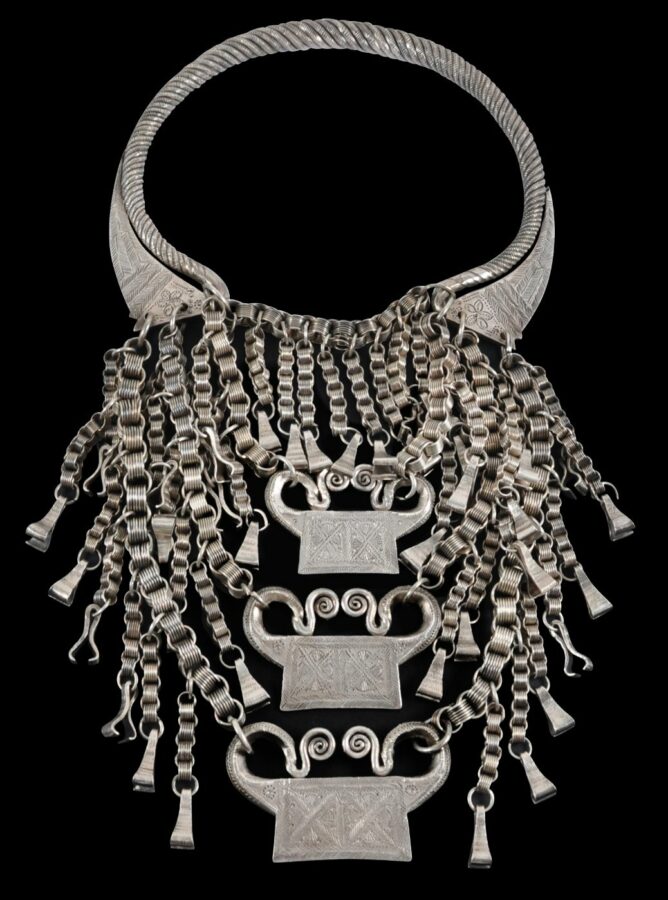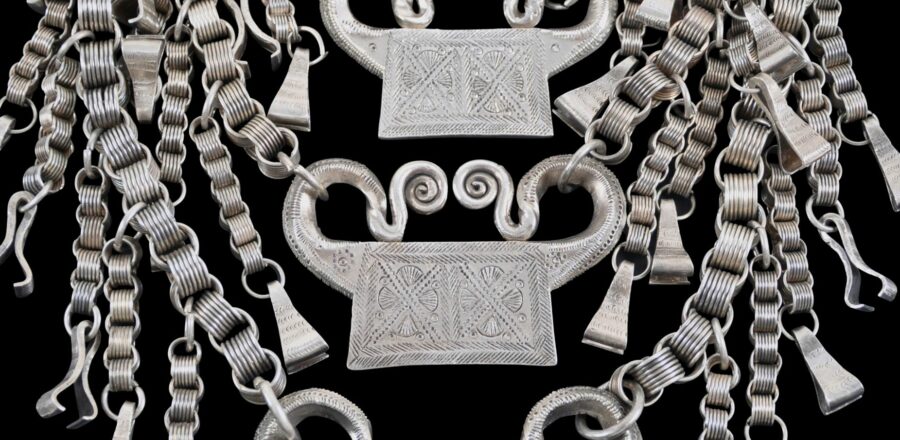This necklace is a particularly elaborate example from the Hmong people of the so-called ‘Golden Triangle’ region of northern Thailand, Laos and north-eastern Burma. It is of almost pure silver.
It comprises a heavy, solid silver, twisted torque from which multiple silver chains and dangles are suspended. Among the profusion and three engraved, rectangular pendants known as ‘soul locks’, which were worn to keep the soul inside the body during illness.
Less elaborate examples are illustrated in Beringen (2006, p. 149) and Lewis (1994, p. 52).
The Hmong and are ethnic minority whose origins are in southern China. They are a subgroup of the Miao, a wider minority. The Hmong most likely responsible for the necklace here are likely to be those of northern Thailand, whose numbers currently are around 250,000.
The Hmong were known for the colourful textiles and the large items of silver jewellery worn by their womenfolk. The jewellery was a form of portable wealth suitable for a minority with insecure tenure over their lands.
The necklace is in fine condition with expected pressure wear to the supporting loops.
References
Beringen, J. et al, The Art of Silver Jewellery: From the Minorities of China, the Golden Triangle, Mongolia and Tibet – The Rene van der Star Collection, Skira, 2006.
Lewis, P. & E., Peoples of the Golden Triangle: Six Tribes in Thailand, Thames & Hudson, 1984.



